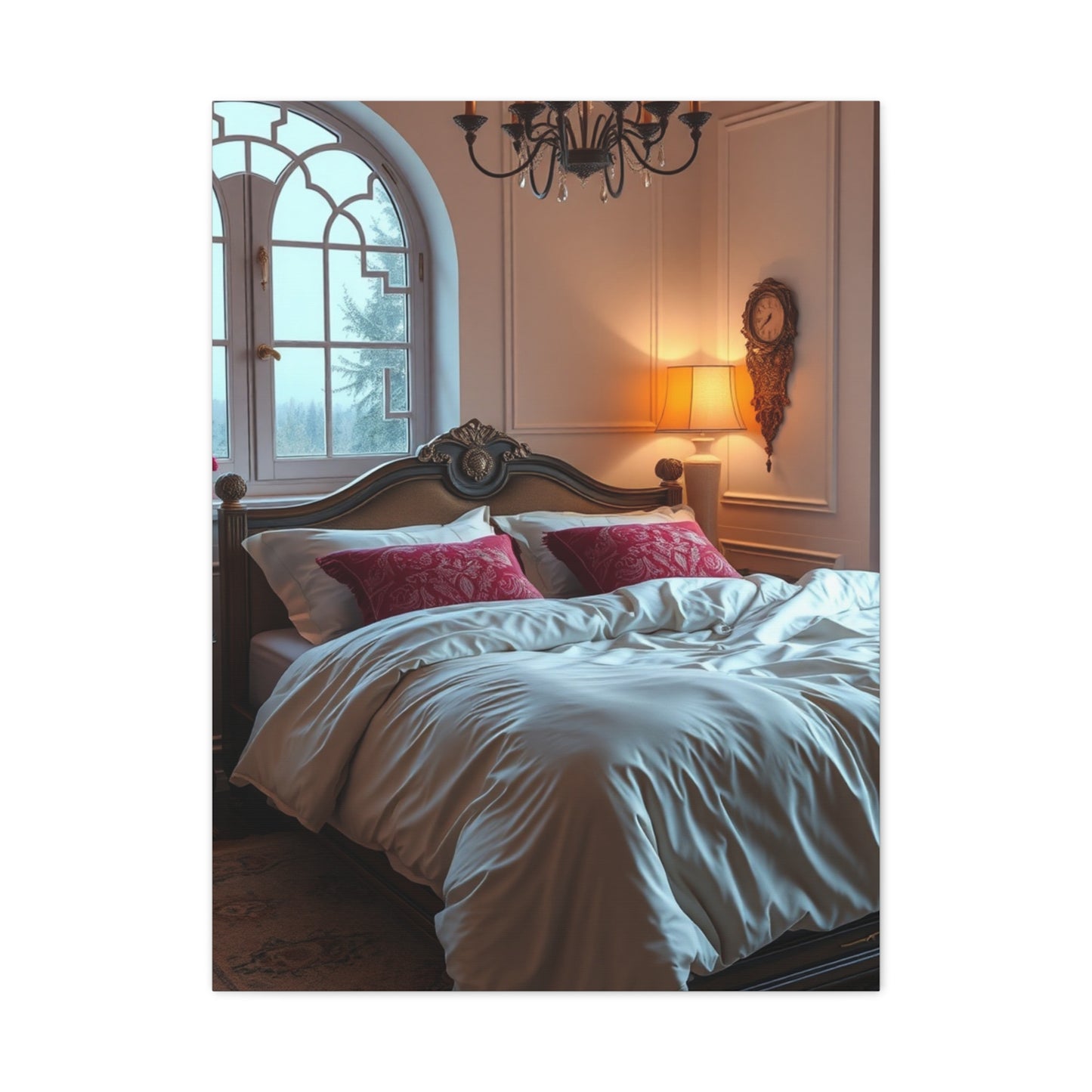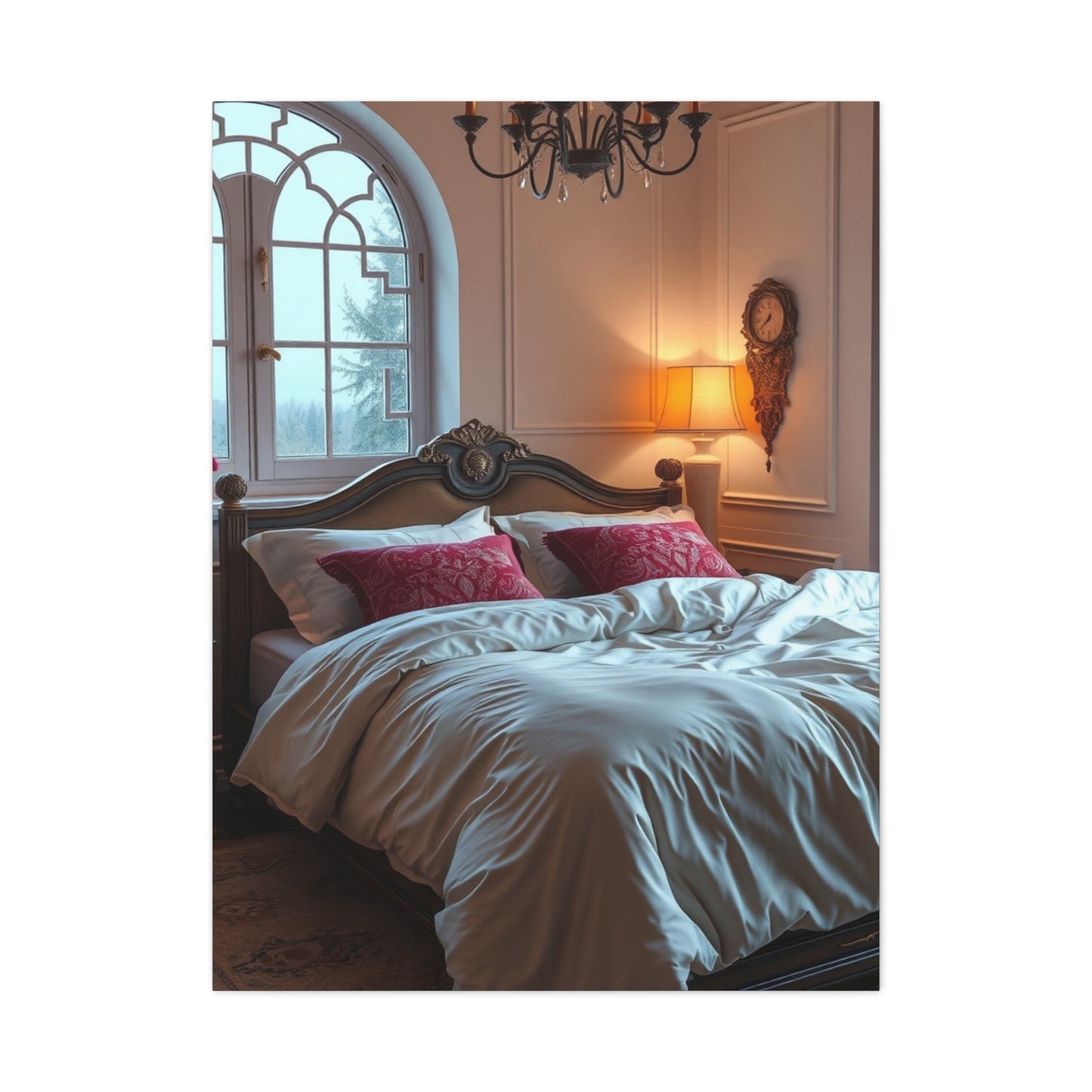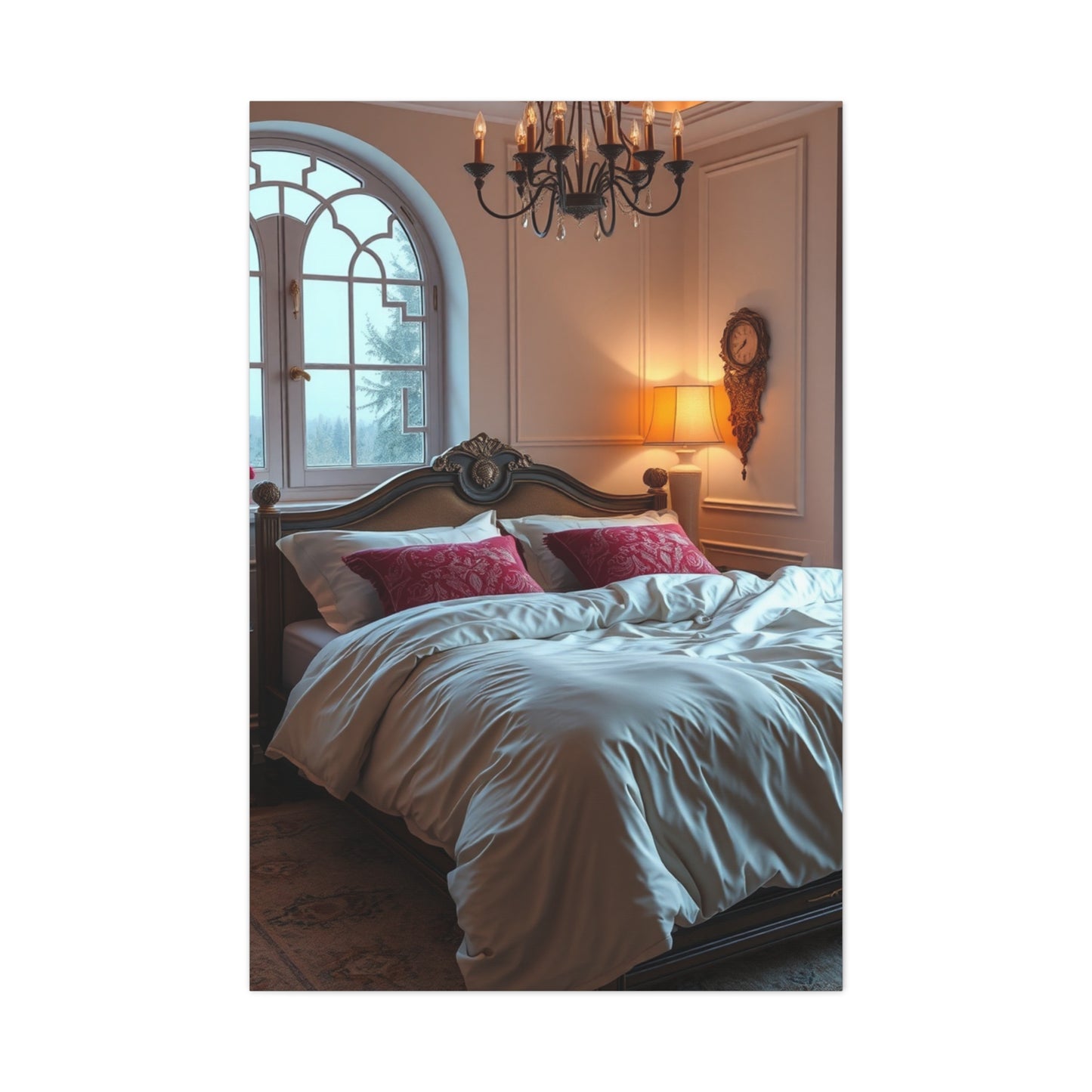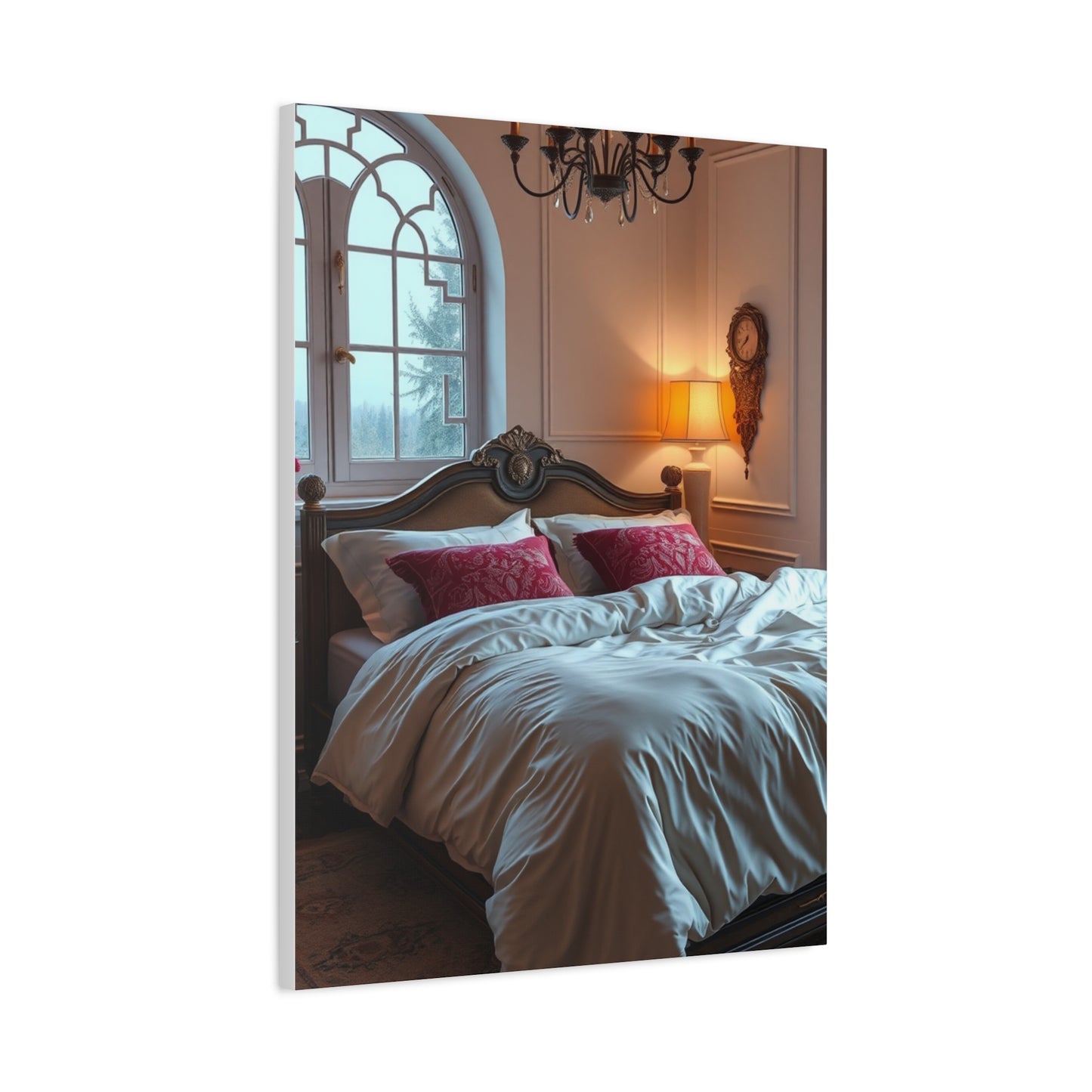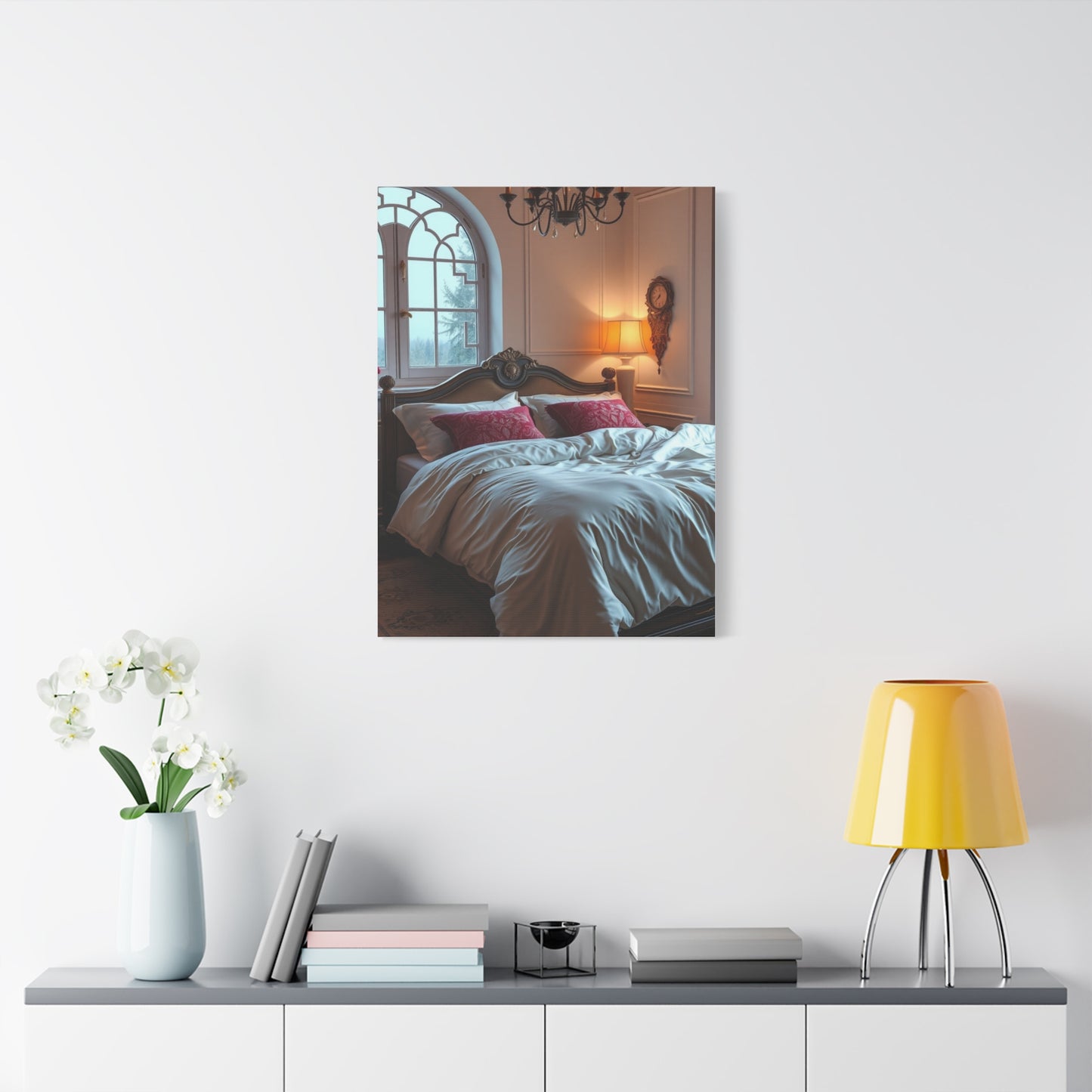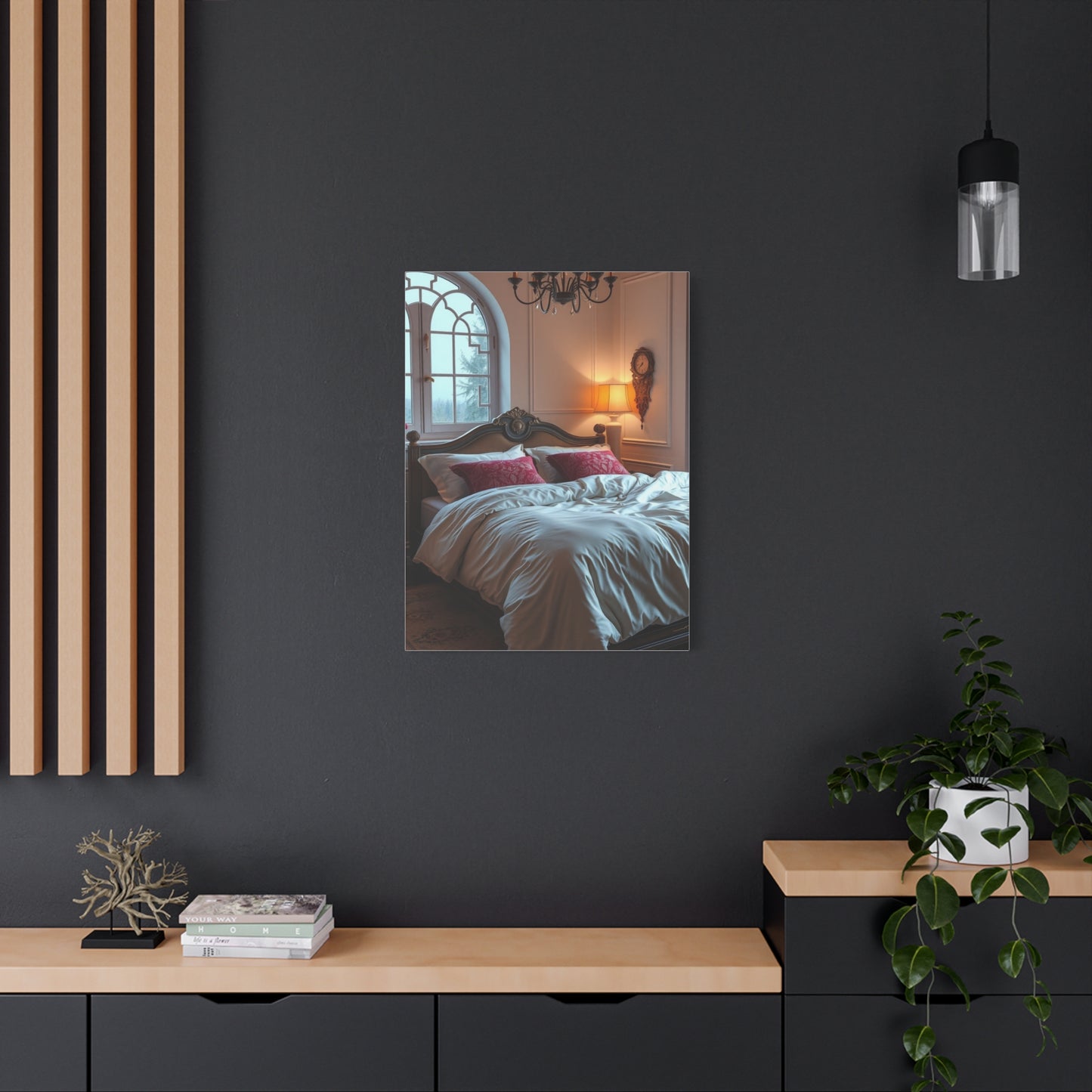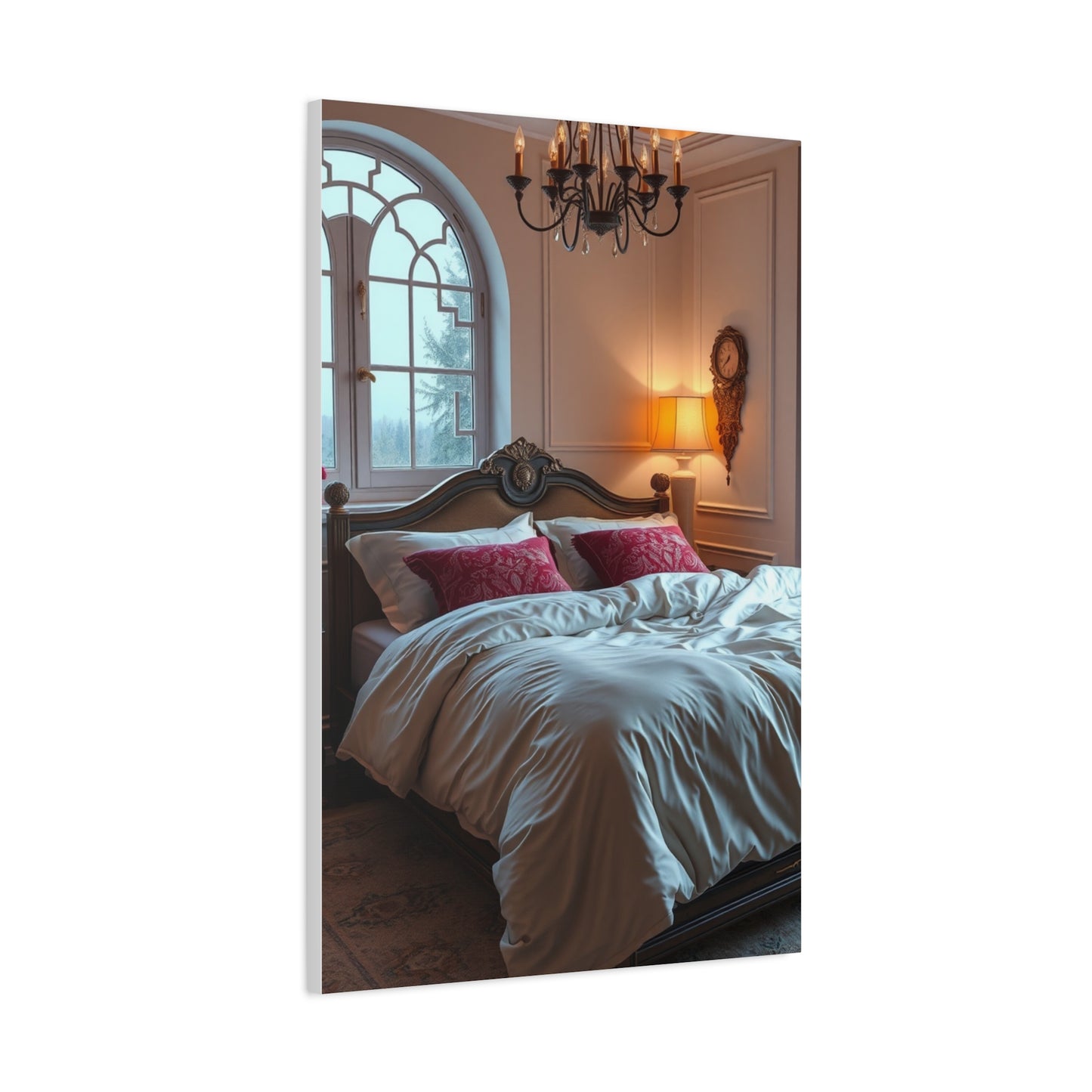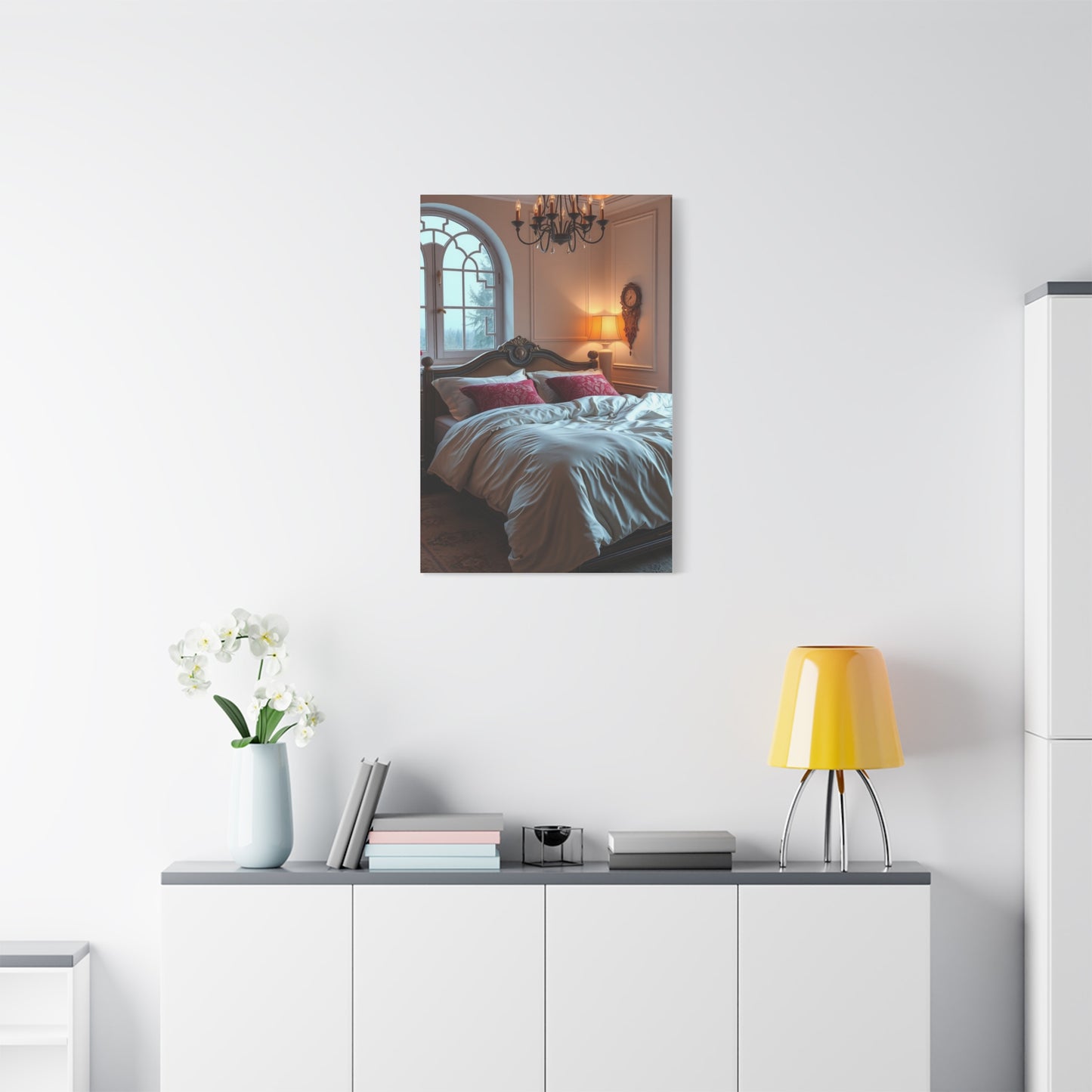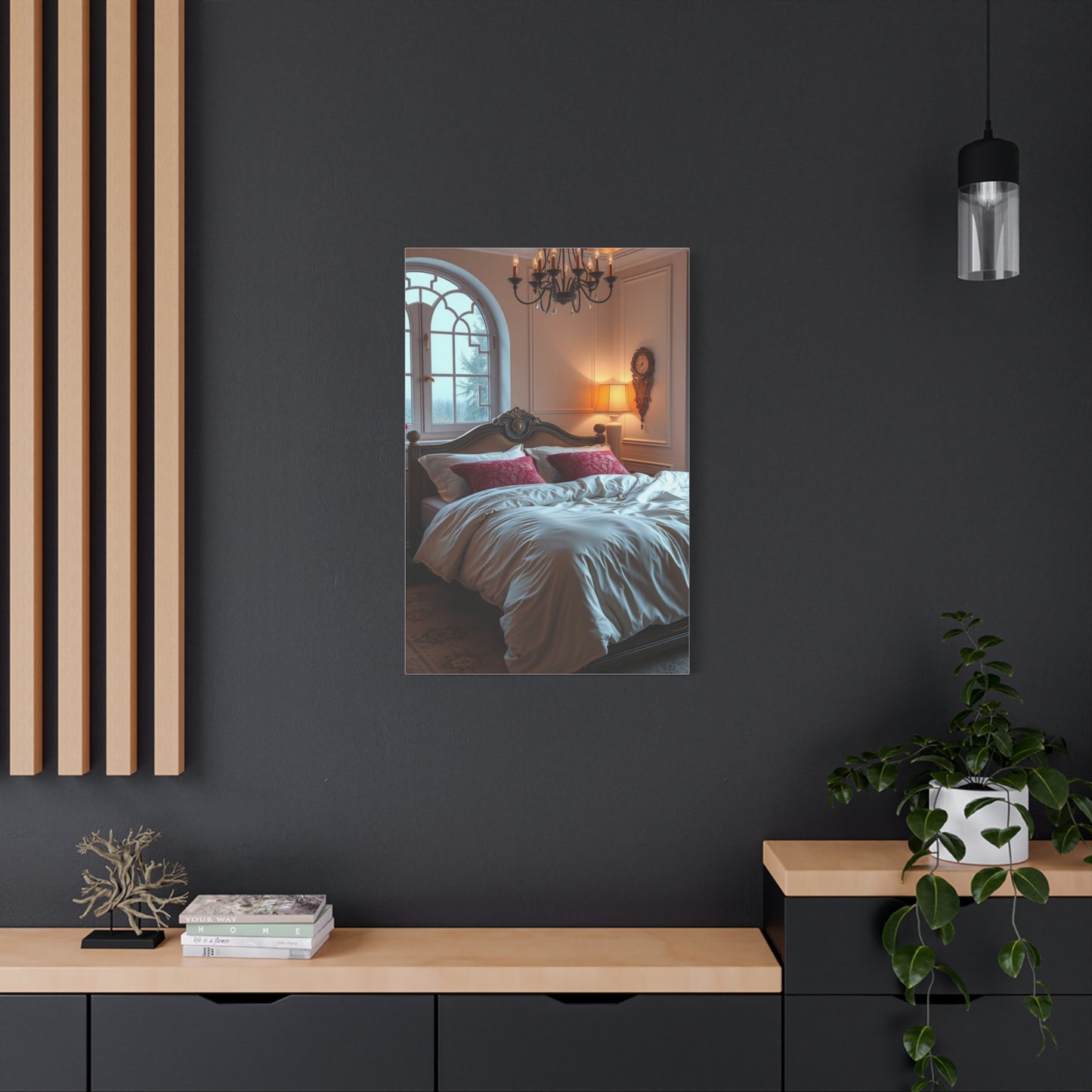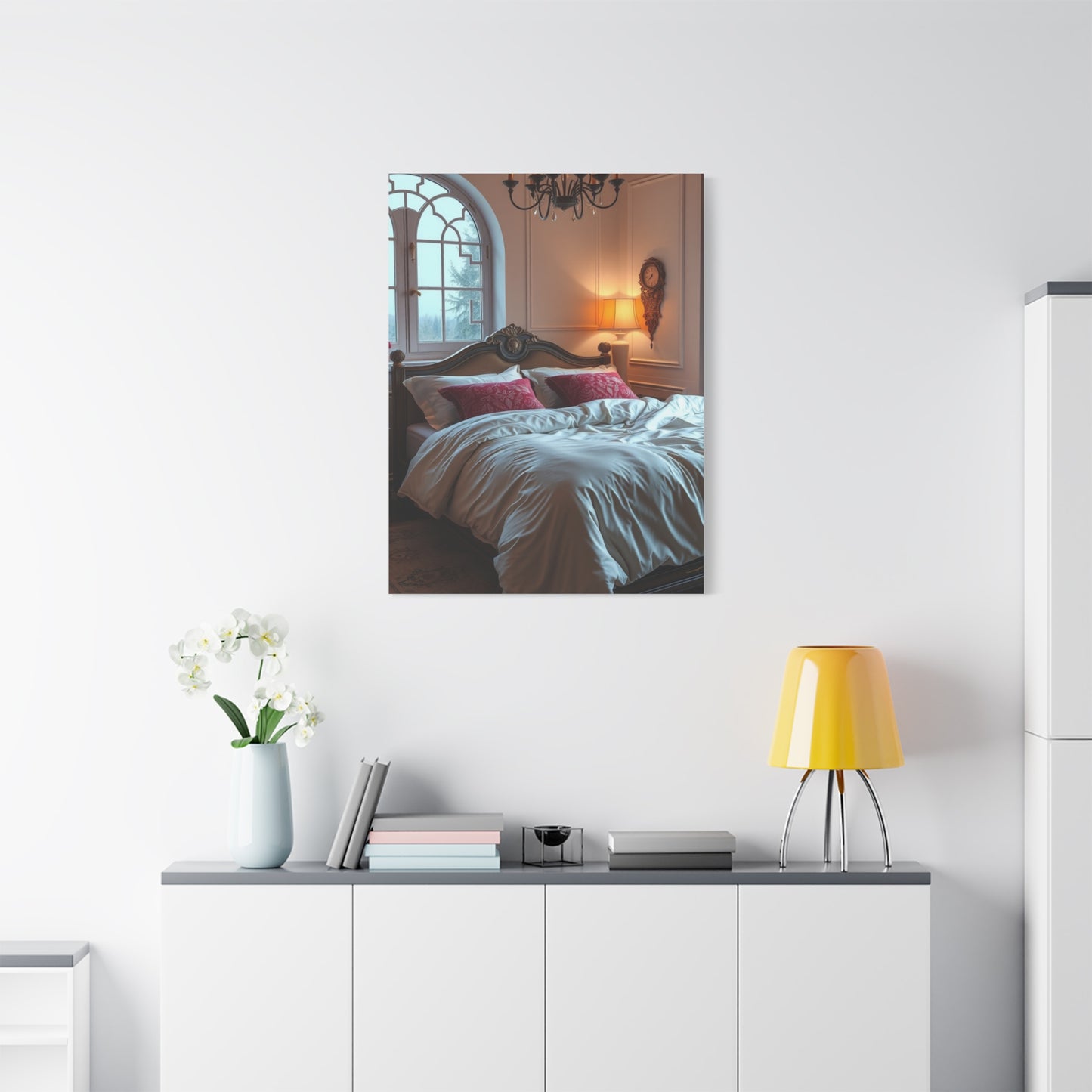Ethereal Serenade Canvas: The Art of Creating Mystical Visual Harmonies
An ethereal serenade canvas represents more than just a piece of artwork hanging on your wall. This unique artistic expression captures the imagination through its ability to blend dreamlike qualities with musical undertones, creating a visual experience that speaks directly to the soul. When you encounter such a canvas, you are witnessing the marriage of two powerful artistic mediums: visual art and the essence of melodic composition. The term itself evokes images of floating, translucent forms that seem to sing their own silent songs, inviting viewers into a realm where reality and fantasy merge seamlessly.
The beauty of an ethereal serenade canvas lies in its capacity to transport observers to another dimension. Artists who create these works understand that their mission extends beyond simply applying paint to fabric. They craft portals into worlds where light dances with shadow, where colors breathe and pulse with life, and where every brushstroke contributes to an overall symphony of visual delight. The canvas becomes a stage upon which an otherworldly performance unfolds, one that continues to reveal new secrets with each viewing.
Creating this type of artwork requires a deep understanding of how colors interact, how textures can suggest movement and sound, and how composition can guide the viewer's eye through a journey that mirrors the rise and fall of a musical piece. The ethereal quality comes from the artist's ability to suggest rather than define, to hint at forms rather than render them with harsh clarity. This subtlety allows each viewer to bring their own interpretations and emotional responses to the work, making every encounter with an ethereal serenade canvas a personal and unique experience.
The Origins of Ethereal Art in Canvas Painting
The concept of creating ethereal artwork on canvas has roots that stretch back through centuries of artistic exploration. Throughout history, painters have sought ways to capture the intangible, to give form to feelings and sensations that exist beyond the physical realm. Ancient artists used symbolic imagery and mystical subjects to convey spiritual concepts, laying the groundwork for what would eventually evolve into more abstract and atmospheric approaches to canvas work.
During the Romantic period, painters began to explore the emotional power of landscapes shrouded in mist, figures emerging from shadows, and scenes bathed in mysterious light. These artists understood that sometimes what remains hidden or suggested can be more powerful than what is clearly shown. They experimented with techniques that softened edges, blurred boundaries, and created a sense of depth that seemed to extend beyond the canvas itself. This exploration marked a significant shift in how artists approached their work, moving away from strict representation toward more interpretive and emotional expressions.
The development of new painting techniques and materials also contributed to the evolution of ethereal canvas art. The invention of new pigments allowed for subtler gradations of color, while advances in canvas preparation techniques gave artists smoother, more responsive surfaces on which to work. Oil paints, in particular, with their ability to be blended smoothly and built up in translucent layers, became the perfect medium for achieving the soft, glowing effects associated with ethereal artwork.
As art movements progressed through Impressionism, Symbolism, and into modern abstract expressionism, the possibilities for creating ethereal effects on canvas expanded dramatically. Artists began to understand that atmosphere and mood could be the primary subjects of their work, rather than just background elements supporting more concrete subjects. This realization opened up entirely new avenues for artistic expression, ones that continue to influence contemporary artists working with ethereal themes today.
The Role of Light and Shadow in Ethereal Artwork
Light functions as the primary language through which ethereal serenade canvases communicate their messages. Unlike in traditional representational painting, where light and shadow serve to model three-dimensional forms and create realistic spaces, light in ethereal work becomes an expressive element in its own right. The way an artist handles light and its absence can determine whether a canvas successfully achieves that otherworldly quality or falls flat.
Soft, diffused lighting characterizes most ethereal serenade compositions. Rather than creating dramatic contrasts between bright highlights and dark shadows, artists working in this style tend to use gentle gradations that suggest light filtering through mist, fog, or translucent veils. This approach eliminates harsh divisions within the composition, allowing all elements to exist in a unified atmospheric space. The resulting effect feels similar to the quality of light on an overcast day, or in the moments just before sunrise or after sunset, when everything takes on a soft, magical quality.
The concept of inner luminosity plays a significant role in ethereal canvas work. Rather than depicting light as something that falls upon surfaces from an external source, artists often create the impression that objects or areas within the composition are generating their own gentle glow. This effect requires careful attention to color temperature and value relationships, building up layers in such a way that lighter, warmer tones seem to emanate from within deeper, cooler surroundings. The result is a sense of magic and mystery, as if the canvas contains its own internal light source.
Shadows in ethereal serenade canvases function differently than in more conventional artwork. Instead of serving primarily to anchor objects in space or create depth through contrast, shadows in ethereal work often appear soft, colored, and somewhat transparent. They suggest rather than define, hint at presence rather than clearly delineate form. These softer shadows maintain the dreamlike quality of the overall composition, preventing any element from becoming too concrete or definite.
The interplay between light and shadow creates rhythm and movement throughout an ethereal canvas. Just as a musical composition uses variations in volume and tone to create interest and guide the listener through the piece, an ethereal painting uses subtle shifts in value and luminosity to direct the viewer's eye and create visual pacing. Areas of greater luminosity naturally draw attention, serving as focal points or rest stops within the composition, while darker passages provide contrast and depth without disrupting the overall atmospheric unity.
Musical Elements Translated into Visual Form
The connection between music and visual art has fascinated artists and theorists for centuries, but in ethereal serenade canvases, this relationship becomes particularly explicit and intentional. Artists working in this style actively seek to translate the qualities of musical composition into visual terms, creating paintings that function almost like frozen moments of melodic expression. This translation requires understanding both the emotional content of music and the visual means by which those same emotions can be evoked.
Rhythm manifests in ethereal canvases through the repetition and variation of visual elements. Just as a musical phrase might repeat with subtle variations throughout a composition, visual motifs can recur across a canvas in different sizes, colors, or degrees of clarity. This repetition creates a sense of continuity and coherence, allowing the viewer's eye to move through the work with the same kind of fluid ease that the ear follows a melodic line. The spacing and clustering of these elements can suggest tempo, with tightly grouped marks creating visual acceleration and more widely spaced elements allowing for moments of visual rest.
Harmony in visual terms relates to how different elements within the composition work together to create a pleasing and balanced whole. In an ethereal serenade canvas, harmony emerges from carefully considered color relationships, balanced composition, and a consistent approach to mark-making and texture throughout the work. Just as musical harmony involves the simultaneous sounding of different notes that complement each other, visual harmony requires that all elements of the painting, while potentially quite diverse, feel like they belong together and support the overall atmospheric effect.
The concept of melody finds its visual equivalent in the creation of flowing lines and forms that guide the viewer's eye through the composition. These might be literal linear elements, such as suggested horizons, floating ribbons, or abstract sweeping marks, or they might be more subtle paths created through the arrangement of colors and values. A successful ethereal canvas will have a clear visual path for the eye to follow, one that creates a satisfying journey from entry point through various points of interest and ultimately to a satisfying resolution.
Dynamic range, which in music refers to variations in volume from soft to loud, translates in visual art to the range from light to dark, or from subtle to bold. Ethereal serenade canvases typically favor a narrower dynamic range, keeping most elements within a similar value range to maintain that soft, dreamlike quality. However, even within this limited range, artists must create enough variation to maintain visual interest and prevent the work from becoming monotonous. Strategic placement of slightly darker or lighter areas provides visual punctuation, like accents in a musical score.
Composition Strategies for Ethereal Canvas Work
The way elements are arranged within an ethereal serenade canvas determines whether the work successfully transports viewers to another realm or simply appears as an attractive but ultimately unmemorable decoration. Composition in ethereal work follows different priorities than in more traditional approaches to canvas painting. Rather than focusing primarily on creating realistic spatial depth or organizing clearly defined objects, ethereal compositions aim to create immersive atmospheres that envelop the viewer.
Asymmetrical balance works particularly well in ethereal canvases, creating visual interest while avoiding the static quality that can result from perfectly symmetrical arrangements. By placing elements off-center and varying their sizes and densities across the canvas, artists create dynamic compositions that suggest movement and life. This approach mirrors the way natural phenomena unfold, where perfect symmetry is rare and variety is the norm. The result feels organic and alive, inviting exploration rather than presenting itself all at once.
The concept of negative space becomes especially important in ethereal composition. Rather than filling every area of the canvas with active elements, successful ethereal works allow for areas of relative calm where the eye can rest. These quieter passages serve multiple purposes: they prevent visual overwhelm, they provide contrast that makes more active areas more effective, and they suggest the vastness and emptiness that often characterizes dreamlike or spiritual spaces. The relationship between filled and empty spaces creates a breathing quality, a visual rhythm of activity and rest.
Layering creates both literal and implied depth in ethereal serenade canvases. By building up multiple layers of paint, each with varying degrees of opacity, artists create complex surfaces that reveal themselves gradually, rewarding sustained viewing. This physical layering can also suggest conceptual layering, with forms appearing to float at different distances from the viewer, creating a sense of atmospheric perspective even in works that have no traditional subject matter. The impression is of looking through veils or windows into successive depths of space.
The edges of an ethereal canvas require special consideration. Unlike works that frame their content clearly within definite boundaries, ethereal paintings often suggest that the atmospheric conditions and visual phenomena they depict continue beyond the physical limits of the canvas. This can be achieved by allowing compositional elements to drift off the edges or by maintaining the same atmospheric quality right to the borders of the work, rather than using a different treatment for edge areas. This approach makes the canvas feel like a window onto a larger reality rather than a complete, self-contained object.
Choosing the Right Canvas and Painting Materials
The physical materials used to create an ethereal serenade canvas significantly impact the final result. Every choice, from the texture of the canvas itself to the type of paint and the tools used for application, contributes to the overall aesthetic and determines what effects are possible. Artists serious about achieving authentic ethereal qualities must understand how different materials behave and which combinations work best for this particular style.
Canvas texture plays a fundamental role in how paint sits on the surface and how light interacts with the finished work. For ethereal paintings, many artists prefer finely woven canvases with a smooth surface, as these allow for more subtle blending and smoother gradations. Rough, heavily textured canvases can interfere with the soft, flowing quality characteristic of ethereal work, though some artists intentionally use medium-textured surfaces to add a subtle grain that enhances certain effects. The key is choosing a surface that supports rather than fights against the artistic goals.
The choice between pre-primed commercial canvases and applying custom ground layers depends on how much control an artist wants over the painting surface. Pre-primed canvases offer convenience and consistency, but applying custom gesso layers allows for adjustments in absorbency, texture, and even slight color tinting that can affect how subsequent paint layers behave. For ethereal work, some artists prefer to apply several thin coats of gesso, sanding lightly between coats, to create an extremely smooth, receptive surface that allows paint to glide effortlessly.
Paint quality makes an enormous difference in ethereal canvas work. Professional-grade paints contain higher concentrations of pigment and use better-quality binders, resulting in colors that remain vibrant even when mixed or applied in thin layers. For glazing techniques essential to ethereal painting, high-quality paints create clearer, more luminous layers than student-grade alternatives. The investment in better materials pays off in the final result, particularly in the subtle, complex color interactions that give ethereal work its characteristic glow.
Medium selection expands the possibilities for achieving ethereal effects. Glazing mediums specifically formulated to increase transparency while maintaining color intensity become invaluable tools. These products allow artists to thin their paint for layering without diminishing color strength or compromising the paint's structural integrity. Different mediums create different effects: some add gloss, some maintain a matte finish, some speed drying time while others extend it. Understanding these options allows artists to tailor their working method to suit their specific vision.
Brush selection impacts both the process and the result of ethereal canvas painting. Soft, flexible brushes made from synthetic or natural fibers allow for smooth, even application and gentle blending. Flat brushes work well for laying in broad areas of color, while round brushes offer versatility for both detailed work and flowing marks. Fan brushes excel at creating soft, feathered effects. Many artists working in ethereal styles maintain a collection of brushes in various sizes and shapes, each serving specific purposes in the creation of their dreamlike compositions.
Creating Focal Points Without Harsh Contrasts
One of the greatest challenges in creating an ethereal serenade canvas lies in establishing focal points and visual hierarchy without resorting to the dramatic contrasts typically used for this purpose. The soft, unified quality essential to ethereal work seems to work against the need to guide viewer attention and create compositional structure. However, skilled artists have developed numerous strategies for creating effective focal areas while maintaining overall atmospheric unity.
Subtle value shifts can create surprisingly effective focal points when handled with sensitivity. Even very slight increases in lightness or darkness relative to surrounding areas naturally draw the eye, particularly when these value changes are concentrated in a specific region of the canvas. The key is making these shifts gradual enough that they don't disrupt the overall softness of the work, yet definite enough that they create a clear visual destination. This requires careful observation and frequent stepping back from the canvas to assess the cumulative effect of small adjustments.
Color temperature variations offer another means of creating focal points in ethereal compositions. By introducing slightly warmer tones into an overall cool palette, or vice versa, artists can draw attention to specific areas without increasing contrast or sharpening edges. The human eye naturally responds to these temperature differences, moving toward warmer areas which appear to advance in space. This technique works particularly well because it operates on a subtle, almost subconscious level, guiding attention without obvious manipulation.
Increased detail or texture in specific areas can establish focal points while maintaining soft, ethereal overall character. While most of an ethereal canvas might feature smooth, blended surfaces, introducing slightly more visible brushwork, subtle pattern, or delicate marks in a focal region gives the eye something to latch onto and examine. This concentration of visual interest doesn't need to be dramatic to be effective; even gentle increases in surface activity can successfully direct attention.
Compositional placement remains one of the most reliable methods for establishing focal areas in ethereal canvases. By positioning key elements according to classical compositional principles such as the rule of thirds or golden ratio, artists can ensure that certain areas naturally attract attention regardless of what specific visual characteristics they possess. Combining strategic placement with subtle variations in color, value, or texture creates focal points that feel organic rather than forced, maintaining the dreamlike quality essential to ethereal work.
The use of implied or suggested forms can create focal points through psychological factors rather than purely visual ones. When viewers detect hints of recognizable imagery within abstract or semi-abstract ethereal compositions, their minds engage in the process of recognition and interpretation, creating a natural focus of attention. These forms don't need to be clearly defined; often the merest suggestion of a figure, face, or familiar object is enough to create a compelling focal point that draws and holds attention.
Exploring Different Styles Within Ethereal Canvas Art
While all ethereal serenade canvases share certain fundamental characteristics, the aesthetic is diverse enough to encompass numerous distinct styles and approaches. Artists working within the ethereal tradition have developed various methods for achieving that otherworldly, dreamlike quality, each with its own particular character and emotional resonance. Exploring these different styles helps both artists and appreciators understand the full range of possibilities within ethereal canvas work.
Abstract ethereal canvases eliminate all representational elements, focusing entirely on color, form, and atmospheric effects. These works often feature soft-edged organic shapes floating in ambiguous space, or fields of subtly modulated color that seem to glow and breathe. Without the anchor of recognizable subject matter, abstract ethereal paintings achieve a pure, meditative quality, inviting viewers into states of contemplation free from the associations that come with identifiable imagery. This style appeals to those seeking art that functions primarily on an emotional and sensory level.
Semi-abstract ethereal work maintains hints of representational forms while dissolving them into atmosphere and abstraction. Suggestions of landscapes, figures, or natural phenomena appear and disappear within these compositions, creating a sense of mystery and magic. This approach allows artists to evoke specific moods and associations while maintaining the dreamlike ambiguity that characterizes ethereal aesthetics. Viewers enjoy the puzzle-like quality of detecting and interpreting these half-hidden forms, making each viewing session a fresh experience of discovery.
Landscape-inspired ethereal canvases draw on natural phenomena like mist, clouds, fog, and atmospheric perspective to create their otherworldly effects. These works often depict recognizable landscape elements like mountains, water, or sky, but render them with such softness and atmospheric treatment that they take on a supernatural quality. This style connects ethereal aesthetics with the long tradition of landscape painting while pushing toward more abstract and emotionally expressive territory. The result is often deeply peaceful, invoking the serene beauty of nature at its most sublime moments.
Figurative ethereal paintings incorporate human or other living forms into their compositions, but treat these figures with the same soft, dissolving approach applied to other elements. Forms might appear ghostlike, emerging from or merging with their surroundings, creating a sense of spiritual presence or emotional state made visible. This style allows for narrative and symbolic content while maintaining the atmospheric, transcendent quality of ethereal work. Figures in these paintings often feel more like presences or essences than physical bodies, contributing to the overall sense of otherworldliness.
Geometric ethereal canvases represent a less common but fascinating variation on the style. These works use geometric forms like circles, rectangles, or more complex shapes, but render them with soft edges, translucent overlapping, and subtle color gradations that give them an ethereal rather than hard-edged quality. This approach bridges the gap between the organic softness typically associated with ethereal work and the structural clarity of geometric abstraction, creating compositions that feel simultaneously ordered and dreamlike.
Mixed media ethereal canvases incorporate materials beyond traditional paint to achieve their effects. Artists might add translucent fabrics, metallic leaf, or other materials that catch light in particular ways, enhancing the luminous quality of the work. Some incorporate collage elements that are then painted over and integrated into the overall composition. These explorations demonstrate that ethereal qualities can be achieved through various means, not solely through traditional painting techniques, opening up exciting new possibilities for artistic expression.
The Spiritual Dimensions of Ethereal Canvas Art
Many viewers and artists describe ethereal serenade canvases in spiritual terms, sensing in these works connections to transcendent realities beyond the material world. This spiritual dimension, whether understood in religious, philosophical, or simply contemplative terms, forms an essential part of ethereal art's appeal and significance. Exploring this aspect helps illuminate why such work affects people so profoundly and why creating or viewing it can feel like a meaningful, even sacred, activity.
The transcendent quality of ethereal canvases relates to their ability to suggest realities beyond ordinary physical existence. By depicting scenes and atmospheres that could not exist in the material world, these works point toward possibilities beyond what we can see and touch. For spiritually inclined viewers, this quality makes ethereal art a kind of visual prayer or meditation, a means of connecting with higher dimensions of reality or deeper levels of consciousness. Even for those without explicit spiritual beliefs, these works can evoke feelings of wonder, peace, and connection to something greater than individual existence.
Color in ethereal canvas work often carries spiritual symbolism, whether consciously intended by the artist or not. Throughout human history, certain colors have been associated with spiritual states and concepts: white with purity and enlightenment, blue with divine presence and infinity, gold with sacred illumination. Artists working in ethereal styles often gravitate toward these spiritually resonant colors, creating works that tap into deep wells of symbolic meaning. This use of color can communicate spiritual concepts and evoke religious feelings without requiring explicit religious imagery or iconography.
The meditation-inducing quality of ethereal canvases makes them valuable tools for spiritual practice. The soft, non-demanding nature of these works creates ideal conditions for contemplative viewing, allowing the mind to settle and open rather than being constantly stimulated by dramatic visual incident. Some people use ethereal artwork as focal points during meditation, finding that the gentle, flowing forms support rather than distract from meditative states. This practical spiritual application adds another dimension to the value and purpose of ethereal canvas art.
The connection between ethereal aesthetics and various mystical traditions deserves recognition. Many spiritual traditions speak of veils between worlds, of light that illuminates spiritual truth, of the dissolution of boundaries between self and cosmos. Ethereal canvas art, with its veils of color, luminous atmospheres, and dissolving forms, visually embodies many of these mystical concepts. Whether artists consciously draw on these traditions or arrive at similar imagery through intuitive exploration, the result is work that resonates with age-old spiritual insights about the nature of reality and consciousness.
The creative process itself takes on spiritual dimensions for many artists working in ethereal styles. The meditative state required for the careful, patient layering and blending characteristic of this work can become a form of spiritual practice, a moving meditation that connects the artist more deeply with their own inner life and creative source. Many artists report that creating ethereal canvases feels less like imposing their will on materials and more like collaborating with paint and canvas to allow something beautiful to emerge, a process that humbles the ego and opens channels to deeper creativity.
Practical Tips for Beginning Ethereal Canvas Artists
Starting a journey into creating ethereal serenade canvases can feel daunting, particularly for artists more familiar with traditional representational approaches or dramatic, high-contrast styles. However, with proper guidance and willingness to embrace new ways of working, any dedicated artist can develop the skills and sensibilities needed to create compelling ethereal work. The following practical advice will help beginners navigate the initial challenges and start developing their own ethereal aesthetic.
Beginning with limited color palettes helps new ethereal artists learn to create interest and variation through subtle means rather than relying on dramatic color contrasts. Starting with just two or three related colors plus white allows for focused exploration of how colors blend, how layering affects appearance, and how small adjustments in mixture ratios create different effects. This limitation, rather than being restrictive, actually increases creative freedom by simplifying decisions and allowing for deeper exploration of possibilities within a defined range.
Practicing glazing techniques separately from completed compositions builds essential skills without the pressure of working on a finished piece. Creating sample boards where different glazing approaches are tested side by side helps artists understand how many layers create specific effects, how different colors interact when layered, and how drying time affects results. This experimentation phase is crucial for developing the technical foundation needed for successful ethereal painting, and time spent here pays dividends in confidence and capability when approaching actual canvas work.
Working from reference images of natural phenomena like clouds, mist, and dawn light helps train the eye to see and interpret the subtle color variations and soft forms characteristic of ethereal work. Rather than attempting to replicate these references exactly, beginning artists should use them as starting points for abstraction, identifying the underlying color harmonies and compositional structures that make these natural scenes so appealing. This practice of observation and abstraction bridges the gap between realistic representation and fully ethereal expression.
How to Display Ethereal Canvas Art Effectively
The presentation and display of ethereal serenade canvases significantly impacts how viewers experience these works. Because ethereal art relies heavily on subtle color relationships, soft atmospheric effects, and often gentle luminosity, display conditions can either enhance or diminish their impact. Thoughtful consideration of lighting, framing, wall colors, and spatial context helps ensure that ethereal canvases are experienced as their creators intended.
Lighting represents the most critical factor in displaying ethereal canvas art effectively. These works generally look best under soft, diffused lighting rather than harsh direct illumination. Strong spotlights can create glare on the canvas surface, obscuring the subtle color variations and textures that give ethereal work its character. Natural light from nearby windows, particularly north-facing windows that provide consistent indirect light, often works beautifully for ethereal canvases. When artificial lighting is necessary, warm LED track lighting or picture lights positioned at appropriate angles can highlight the work without overwhelming it. Adjustable lighting systems allow for customization based on the specific qualities of individual pieces.
Framing choices for ethereal canvases should complement rather than compete with the artwork. Simple, understated frames in neutral tones work well, allowing the painting itself to remain the focus of attention. Many ethereal canvases look excellent in floating frames that create a small gap between the frame edge and the canvas, emphasizing the artwork's independence and giving it space to breathe. Some artists and collectors prefer to display ethereal canvases unframed, particularly when the painting extends to the edges of the canvas, as this eliminates any barrier between the viewer and the ethereal atmosphere the work creates.
Wall color and texture significantly affect how ethereal canvases appear in their display environment. Neutral walls in soft whites, creams, or pale grays provide excellent backgrounds that don't compete with the artwork's subtle color harmonies. Strongly colored walls can cast color reflections onto canvas surfaces, potentially altering the appearance of delicate hues and disrupting the artist's intended color relationships. Textured walls should be avoided behind ethereal canvases, as they can create distracting visual competition; smooth, matte surfaces work best for allowing the artwork to stand out clearly.
Spatial context and surrounding elements require careful consideration when displaying ethereal serenade canvases. These works benefit from breathing room, with adequate empty wall space around them to prevent visual crowding. Grouping multiple ethereal pieces requires attention to how their color palettes and compositional structures interact, ensuring that they create a harmonious ensemble rather than competing for attention. The surrounding decor should maintain a similar level of subtlety and refinement, with overly bold or busy furnishings potentially overwhelming the gentle character of ethereal artwork.
Emotional Narratives in Ethereal Canvas Compositions
While ethereal serenade canvases often appear abstract or purely atmospheric, they can carry powerful emotional narratives that resonate deeply with viewers. Artists use color, form, composition, and atmospheric effects not just to create beautiful surfaces but to communicate feelings, moods, and even complex emotional journeys. Understanding how ethereal canvases can function as emotional narratives enhances both the creation and appreciation of these works.
Serenity and peace represent the most commonly expressed emotions in ethereal canvas work. The soft colors, gentle forms, and flowing compositions that characterize this style naturally evoke feelings of calm and tranquility. Artists achieve these effects through careful attention to color harmony, avoiding jarring contrasts or aggressive marks that might disrupt the peaceful atmosphere. The resulting works function as visual sanctuaries, offering viewers respite from the demands and stresses of daily life. In a world that often feels chaotic and overwhelming, ethereal art's ability to provide moments of peace makes it deeply valuable.
Nostalgia and longing find eloquent expression through ethereal aesthetics. The dreamlike, half-remembered quality of these canvases naturally evokes memories and emotions associated with the past. Soft, faded colors recall old photographs, while dissolving forms suggest the way memory itself works, retaining impressions and feelings while losing specific details. Artists working with these emotional themes often create compositions that feel both beautiful and slightly melancholy, capturing the bittersweet nature of remembering people, places, and times that are gone but not forgotten.
Mystery and wonder emerge when ethereal canvases leave questions unanswered and forms undefined. By suggesting rather than stating, by hiding as much as revealing, artists create works that spark curiosity and imagination. Viewers find themselves wondering what lies hidden within misty passages, what forms are emerging or dissolving, what spaces exist beyond the visible areas of the canvas. This sense of mystery can be both unsettling and exhilarating, reminding viewers that life contains unknowns and possibilities beyond current understanding.
Hope and renewal often appear in ethereal canvases through the use of light and particular color associations. Warm, luminous passages breaking through cooler, darker areas suggest the triumph of light over darkness, a universal metaphor for hope. Soft greens and new-growth colors evoke spring and renewal, while gentle pinks and golds suggest dawns and new beginnings. These works communicate optimism without naivety, acknowledging shadows while emphasizing light, creating emotional statements that uplift without denying difficulty.
Seasonal Themes in Ethereal Canvas Art
The cycle of seasons provides rich thematic material for ethereal serenade canvases, with each season offering distinct atmospheric qualities, color palettes, and emotional associations. Artists exploring seasonal themes through an ethereal lens capture not just the surface appearance of different times of year but the essential feeling and spirit that each season embodies. This approach transforms seasonal imagery from mere decoration into profound meditations on time, change, and the rhythms of natural life.
Spring manifests in ethereal canvases through delicate colors and a sense of emergence and awakening. Pale greens, soft pinks, and gentle yellows suggest new growth and renewal. Forms appear to be emerging from mist or shadow, symbolizing the way life returns after winter's dormancy. The atmospheric quality might suggest morning fog lifting to reveal budding trees, or soft rain nourishing awakening earth. Ethereal spring compositions often carry feelings of hope, gentle joy, and the promise of possibilities to come, making them uplifting presences in any space.
Summer translates to ethereal canvas work through warmer, more luminous color palettes and a sense of fullness and abundance. Rather than the bright, saturated colors often associated with summer, ethereal interpretations use warm pastels and golden hues that suggest sunlight filtered through atmosphere. The compositions might evoke lazy afternoon light, heat haze shimmering over fields, or the soft glow of long evenings. These works capture summer's gift of time seeming to slow and expand, moments of ease and contentment that provide respite from the demands of busier seasons.
Autumn appears in ethereal canvases through rich but muted tones suggesting the season's unique combination of beauty and melancholy. Soft ochres, muted oranges, dusty purples, and warm browns create harmonies that feel both luxurious and contemplative. The atmospheric treatment might suggest mist in cooling morning air, leaves drifting through soft light, or the particular quality of autumn afternoon sunshine. These works often carry bittersweet emotions, acknowledging the beauty of harvest and maturity while also sensing the approach of dormancy and letting go.
Winter ethereal canvases embrace coolness, spaciousness, and quietude. Palettes dominated by cool whites, soft blues, and silvery grays suggest snow-covered landscapes, frozen water, and the clarity of cold air. Rather than feeling harsh or inhospitable, ethereal winter works often convey a sense of purity, rest, and inner stillness. The compositions might evoke the hush of falling snow, the crystalline beauty of frost, or the subtle colors in winter skies. These paintings remind viewers that winter's apparent emptiness contains its own gifts: clarity, rest, and the promise of renewal to come.
Creating Depth Without Traditional Perspective
Ethereal serenade canvases often need to suggest spatial depth despite lacking the clear perspective systems used in traditional representational painting. The atmospheric, ambiguous nature of ethereal work seems at odds with the mathematical certainty of linear perspective, yet successful ethereal paintings do create convincing sensations of depth and dimensionality. Artists achieve these effects through alternative strategies that suit the dreamy, indefinite character of their work.
Atmospheric perspective, the phenomenon where distant objects appear lighter, bluer, and less distinct than nearby ones, provides a perfect tool for creating depth in ethereal canvases. By gradually shifting colors toward cooler, paler versions as forms recede into space, and by progressively softening edges and reducing detail, artists create clear spatial recession without needing horizon lines or vanishing points. This approach feels natural and organic, mimicking the way atmosphere actually affects our perception of distance in the real world while maintaining the soft, unified surface quality essential to ethereal aesthetics.
Layering of translucent or semi-translucent forms creates depth through overlapping, with forms that appear to be in front partially obscuring those behind them. This strategy works particularly well in ethereal compositions because the translucency prevents overlapping from creating harsh divisions, instead generating rich visual complexity as colors and forms interact where they meet. The layering can suggest veils, clouds, or simply abstract planes floating in space, but regardless of what is depicted, the effect is a clear sense of multiple spatial levels within the composition.
Scale variation, where similar forms appear in different sizes, naturally suggests spatial positioning even without other depth cues. Smaller versions of forms appearing in upper areas of the canvas read as more distant, while larger forms dominating lower areas feel closer to the viewer. In ethereal work, these scale relationships might be subtle, with forms differing only slightly in size, but even these gentle variations successfully convey depth while maintaining the overall unity and flow of the composition.
Color temperature progression uses the natural tendency of warm colors to advance visually while cool colors recede. By placing warmer hues in areas intended to feel closer and cooler hues in regions meant to suggest distance, artists create spatial depth through color relationships alone. This technique works beautifully in ethereal canvases, where subtle color modulations form the primary means of creating variation and interest. The result feels natural and inviting, drawing viewers into the pictorial space without obvious manipulation.
Gradual dissolution of forms suggests distance through the simple principle that nearby objects appear more defined while distant ones fade into atmosphere. In ethereal canvases, this might mean that forms in foreground areas, while still soft and ambiguous, possess slightly more definition than those appearing in background regions, which dissolve almost completely into atmospheric effects. This progressive loss of definition creates powerful spatial recession while perfectly suiting the mysterious, indefinite character of ethereal aesthetics.
The Role of Texture in Ethereal Canvas Creation
While ethereal serenade canvases often appear smooth and seamless from a distance, surface texture plays a crucial role in their creation and impact. The physical qualities of the painted surface affect how light interacts with the work, how colors appear to the eye, and how viewers experience the piece both visually and, for those who come close enough, tactilely. Understanding texture's role helps artists make more informed choices about how to build their ethereal compositions.
Subtle texture adds visual interest and complexity without disrupting the smooth, flowing character essential to ethereal aesthetics. Rather than obvious impasto or heavy brush marks, ethereal canvases often feature gentle variations in surface quality: slight ridges where glazes have built up, delicate traces of brush movement, soft transitions between smoother and slightly more textured areas. These variations catch light differently, creating shimmer and depth that make the surface feel alive and dynamic rather than flat and static.
The texture of the canvas itself influences the final appearance of ethereal paintings. Fine-weave canvases allow for very smooth surfaces where colors can blend seamlessly, perfect for achieving gossamer, delicate effects. Medium-weave canvases retain a slight tooth that can add a subtle grain to the painting, which some artists find preferable for preventing the work from appearing too slick or mechanical. The choice depends on the specific effects desired and the artist's personal preferences, but awareness of how canvas texture affects final results allows for more intentional decision-making.
Building texture through multiple layers of thin paint creates complex surfaces that reward close examination. Each successive layer adds physical dimension, albeit subtle, and creates optical mixing as colors from different levels interact visually. This archaeological quality, where the history of the painting's creation remains visible in its physical structure, adds depth of meaning as well as visual depth. Viewers sense the time and care invested in the work, and the painting takes on a precious quality that commands respect and attention.
Ethereal Canvas Art in Contemporary Interior Design
The integration of ethereal serenade canvases into contemporary living and working spaces reflects broader design trends toward creating environments that support wellbeing, creativity, and contemplation. Interior designers and homeowners increasingly recognize that the art we live with affects our daily experience, mood, and even productivity. Ethereal canvases, with their calming presence and visual beauty, serve important functions beyond mere decoration in thoughtfully designed spaces.
Residential spaces benefit from the peaceful atmosphere that ethereal canvases create. In bedrooms, these works support rest and relaxation, their soft colors and gentle forms creating environments conducive to sleep and dreams. In living areas, ethereal art provides visual interest without overwhelming, allowing for conversation and connection while adding beauty to the space. The non-demanding nature of ethereal work means it doesn't compete for attention with activities happening in the room, instead providing a beautiful backdrop that enhances the overall ambiance without dominating.
Professional environments increasingly incorporate ethereal canvas art to create spaces that support focus and reduce stress. In medical offices and therapy spaces, these calming works help anxious patients feel more at ease. In corporate offices, ethereal paintings provide visual relief from screens and paperwork, offering brief moments of mental rest that can actually improve productivity. Co-working spaces and creative studios often feature ethereal art to inspire without dictating specific directions for thought, allowing individual creativity to flourish in a beautiful environment.
Wellness-focused spaces like yoga studios, meditation centers, and spa facilities naturally gravitate toward ethereal canvas work because its aesthetic aligns perfectly with the activities these spaces support. The visual qualities of ethereal art complement and enhance practices aimed at reducing stress, promoting mindfulness, and supporting physical and mental health. In these contexts, the art becomes an integral part of the therapeutic environment rather than simply decoration.
The scale of ethereal canvases in interior spaces requires thoughtful consideration. Large-scale works can create dramatic focal points and establish the emotional tone for entire rooms. Smaller pieces work well in intimate spaces or as parts of groupings. Very large ethereal canvases provide immersive experiences, surrounding viewers with atmospheric effects that can transform the feeling of a space. The size should match the room's proportions and the desired level of impact, with larger spaces generally benefiting from correspondingly larger artworks.
Color coordination between ethereal canvases and interior spaces can follow different philosophies depending on desired effects. Matching the canvas's color palette to existing room colors creates harmonious unity, allowing the artwork to feel like a natural extension of the space. Alternatively, choosing works with colors that complement or subtly contrast with room colors creates more dynamic relationships while still maintaining overall harmony. The key is avoiding jarring conflicts that would disrupt both the room's aesthetic and the artwork's ethereal quality.
Combining Ethereal Aesthetics with Other Art Styles
While ethereal serenade canvases possess a distinct character, this aesthetic can be successfully combined with elements from other artistic styles to create hybrid works with unique appeal. These combinations expand creative possibilities while potentially reaching audiences who appreciate multiple aesthetic approaches. Understanding how ethereal qualities can coexist with other styles helps artists develop distinctive personal voices and create works that transcend simple categorization.
Geometric elements introduced into ethereal compositions create interesting tensions between organic softness and structured clarity. Soft-edged geometric forms floating in atmospheric spaces suggest cosmic geometry or mathematical beauty revealed through mystical vision. These shapes might be perfect circles and rectangles or more complex geometric patterns, but rendered with the subtle colors and gentle transitions characteristic of ethereal work. The result bridges rational and intuitive modes of perception, appealing to both analytical and emotional responses.
Calligraphic or gestural marks add dynamic energy to otherwise peaceful ethereal canvases. Quick, expressive brushstrokes or fluid line work introduces movement and spontaneity that contrasts with the carefully built atmospheric effects surrounding them. This combination can suggest music becoming visible, emotions erupting into tranquility, or consciousness moving through dreamlike spaces. The key to successful integration lies in ensuring the gestural elements feel like they belong within the ethereal environment rather than being arbitrarily imposed upon it.
Photographic elements integrated through collage or mixed media techniques can ground ethereal compositions in reality while maintaining dreamlike overall character. Fragments of landscape photographs, architectural details, or natural forms might be incorporated into ethereal canvases, then painted over and integrated through glazing and softening techniques. These recognizable elements provide anchors for viewers while still allowing the work to maintain its mysterious, transcendent quality. The combination of photographic specificity and ethereal atmosphere creates layered meanings and visual complexity.
Minimalist principles applied to ethereal canvas work result in extremely refined compositions that eliminate all but essential elements. Rather than the full, complex atmospheres typical of much ethereal work, these hybrid pieces might feature vast areas of subtly modulated single colors with only minimal variations or just a few carefully placed forms. This combination of ethereal coloration and texture with minimalist restraint creates works of great sophistication and meditative power, perfect for contemporary spaces that value both beauty and simplicity.
Conclusion
The Ethereal Serenade Canvas is not merely a work of art; it is a gateway into a realm where imagination and reality harmonize, where the mystical dances with the tangible. Through its intricate use of colors, textures, and symbolic imagery, this canvas invites viewers into an enchanting world where the rules of the ordinary fade, and the extraordinary takes center stage. The artwork resonates with the viewer's inner sense of wonder, evoking a deep emotional connection to the unseen forces that shape our experiences, our dreams, and our aspirations.
At the heart of the Ethereal Serenade lies the pursuit of harmony—both visually and emotionally. The concept of "serenade" itself suggests a gentle, melodic presence, a soft, almost celestial invitation to explore a world that exists just beyond the veil of the everyday. The use of ethereal imagery, be it floating forms, soft gradients, or dreamlike scenes, creates a sense of otherworldliness, a space where the viewer can lose themselves in the beauty and tranquility of the unknown. This ethereal quality is essential to the allure of the piece. It doesn’t demand immediate understanding or logical interpretation; rather, it invites a quiet, introspective engagement that allows the viewer to be transported into a space of quiet reverie.
The Ethereal Serenade Canvas thrives in its ability to evoke mystery and serenity in equal measure. The fluidity of its design and the delicate interplay of light and shadow suggest an atmosphere of stillness, while simultaneously teasing the imagination with the promise of something more. It encourages contemplation, inviting viewers to reflect on the unseen forces that shape the world—be it the mysteries of the cosmos, the depths of the ocean, or the delicate balance of life itself. The artwork becomes a mirror to the viewer’s own sense of wonder, inviting them to explore their personal relationship with the mystical and the unknown.
One of the most striking aspects of this type of art is its ability to evoke a deep emotional response without relying on overt narrative or literal representation. Instead of telling a clear-cut story, the Ethereal Serenade Canvas creates a feeling, a mood, a moment. This allows each viewer to experience it uniquely. Some may find a sense of peace and calm, while others may be reminded of dreams, lost memories, or hopes for the future. The beauty of mystical art like this is that its meanings are not fixed but rather open to interpretation, offering a deeply personal experience to each observer.

















